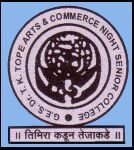Dr. Prannoy Roy
अनुक्रमणिका
Dr. Prannoy Roy: A Pioneer in Indian Journalism
Early Life and Education
Prannoy Lal Roy, born on 15 October 1949, grew up in an upper-class environment, being the son of an English mother and a Bengali father. He attended The Doon School, Dehradun, and Haileybury (UK) for his A-levels before earning his degree in Economics from the University of London’s Queen Mary College in 1973. Roy later pursued a Ph.D. in Economics at the Delhi School of Economics, where he also taught for a year. A certified Chartered Accountant, he worked with PriceWaterhouse, India, before embarking on his media career.
Professional Journey
Prannoy Roy’s media career started with election analysis for Doordarshan. He later founded New Delhi Television (NDTV) in 1988 with his wife Radhika Roy. NDTV was India’s first independent news network and quickly became a significant player in Indian media. Roy became the Chairman of NDTV and emerged as a prominent journalist in India.
In the late eighties, Roy revolutionized live election results coverage on counting day, captivating the nation. His deep analysis of voting patterns, electoral swings, and party analyses solidified his reputation as India’s top psephologist. His show “The World This Week” was among the first to bring international news to Indian households on a weekly basis.
Contributions to Psephology
Roy’s passion for elections began in childhood, producing his first election forecast in 1977. His accurate prediction of the Congress’s seats in the 1984 elections further established his credibility. His blend of knowledge in economics, accounting, and remarkable communication skills made him a unique voice in election analysis.
His book – The Verdict
“The Verdict: Decoding India’s Elections,” co-authored with psephologist Dorab Sopariwala. The book offers an extensive analysis of India’s voting patterns over the last seven decades, presenting statistical insights and landmarks in India’s electoral democracy.
Key Highlights:
- Historical Perspective: The authors trace the changing attitudes towards incumbency across three distinct phases: pro-incumbency (1952-1977), anti-incumbency (1977-2002), and a neutral phase (2002-2019).
- Women’s Participation: The book highlights the significant increase in women’s turnout in elections, especially rural women. This rise reflects both a quantitative and qualitative shift, showing an increase in independent decision-making by women voters.
- Psephology and Poll Predictions: Roy and Sopariwala delve into the practice of psephology in India, offering insights into how poll predictions work, the challenges faced, and the historical reasoning behind various terminologies used. They also provide a ranking of different polling and survey agencies based on accuracy, though they withhold their names.
- Local Issues and Institutional Integrity: The book emphasizes the growing importance of local issues in voting patterns and appreciates the efficiency and integrity of the Election Commission in conducting elections.
- EVM Authenticity: The authors affirm the authenticity of Electronic Voting Machines (EVMs), countering any skepticism regarding their functioning.
- Missing Women Voters: Despite the rise in women voters, the book highlights a concern over 21 million women voters missing from the electoral rolls. The authors urge a sense of urgency to correct this issue.
- Methodological Challenges and Biases: The book elaborates on the methodological challenges in polling, including biases like underestimation bias, where pollsters and respondents tend to play safe, affecting the accuracy of predictions.
- Literary Style: Roy’s experience and scholarship are reflected in his engaging details and ability to blend rigorous analysis with accessibility, making the book stand out in the season of election-related releases.
- Critical Note: The review suggests that the book could have benefitted from a sociological inquiry into the rise in women voter turnout and the possible impact of migration on relative turnout figures.
Overall, “The Verdict” is portrayed as a rich primer on India’s elections, offering an in-depth look at the evolution, trends, and dynamics of the country’s electoral scene, through both statistical data and insightful anecdotes. It represents a thoughtful analysis that could stimulate further research and provoke a deeper understanding of the electoral process in India.
Business Ventures and Leadership
Along with journalism, Dr. Roy is also known for his business acumen. He is the co-founder of RRPR Holding Pvt. Ltd., holding a significant share of the NDTV network. He is also the Director of multiple NDTV subsidiaries. His wife, Radhika Roy, co-founded NDTV 24×7 and has been a significant influence in the media landscape herself.
Controversies
Roy’s career hasn’t been without controversy. In 1998, the CBI filed a criminal conspiracy case against him, and in 2017, his offices and homes were searched over allegations of defrauding a bank.
Personal Life and Interests
Known as ‘doc’ by his colleagues, Roy is a man of fine taste, enjoying golf, driving a Mercedes, and relishing single malt whisky. He is known to be a great person to work with, maintaining a close and happy relationship with his wife, Radhika. A private person, he prefers to stay out of the media glare and enjoys spending time at his farmhouse.
Awards and Recognitions
Winner of several awards, Roy’s influence as India’s leading anchor of current affairs has been acknowledged widely. He has also been involved in Government, serving as Economic Advisor with the Ministry of Finance during 1986-87.
Prannoy Roy’s pioneering work in Indian television, his impact on elections coverage, and his role as a leading media entrepreneur have marked him as one of the most influential figures in Indian journalism. His journey from an economics student to a media mogul has been marked by innovation, excellence, and a passion for bringing transparency and insight to the Indian public.
![]()
